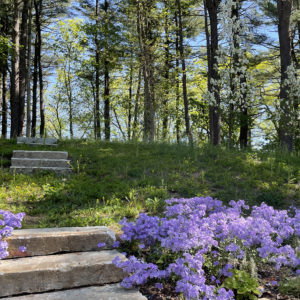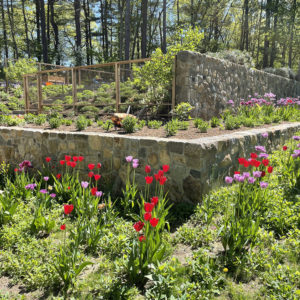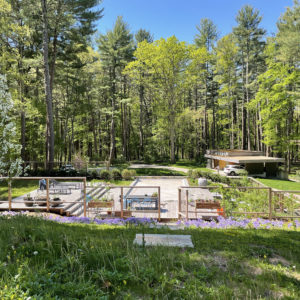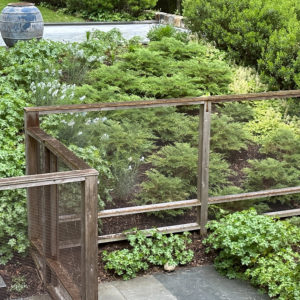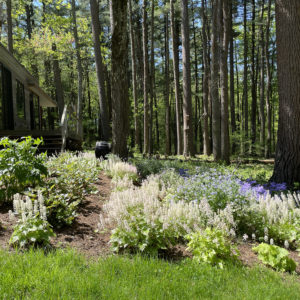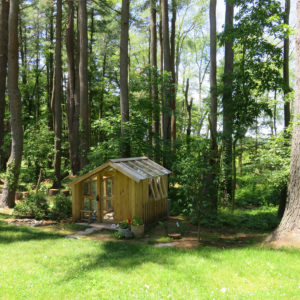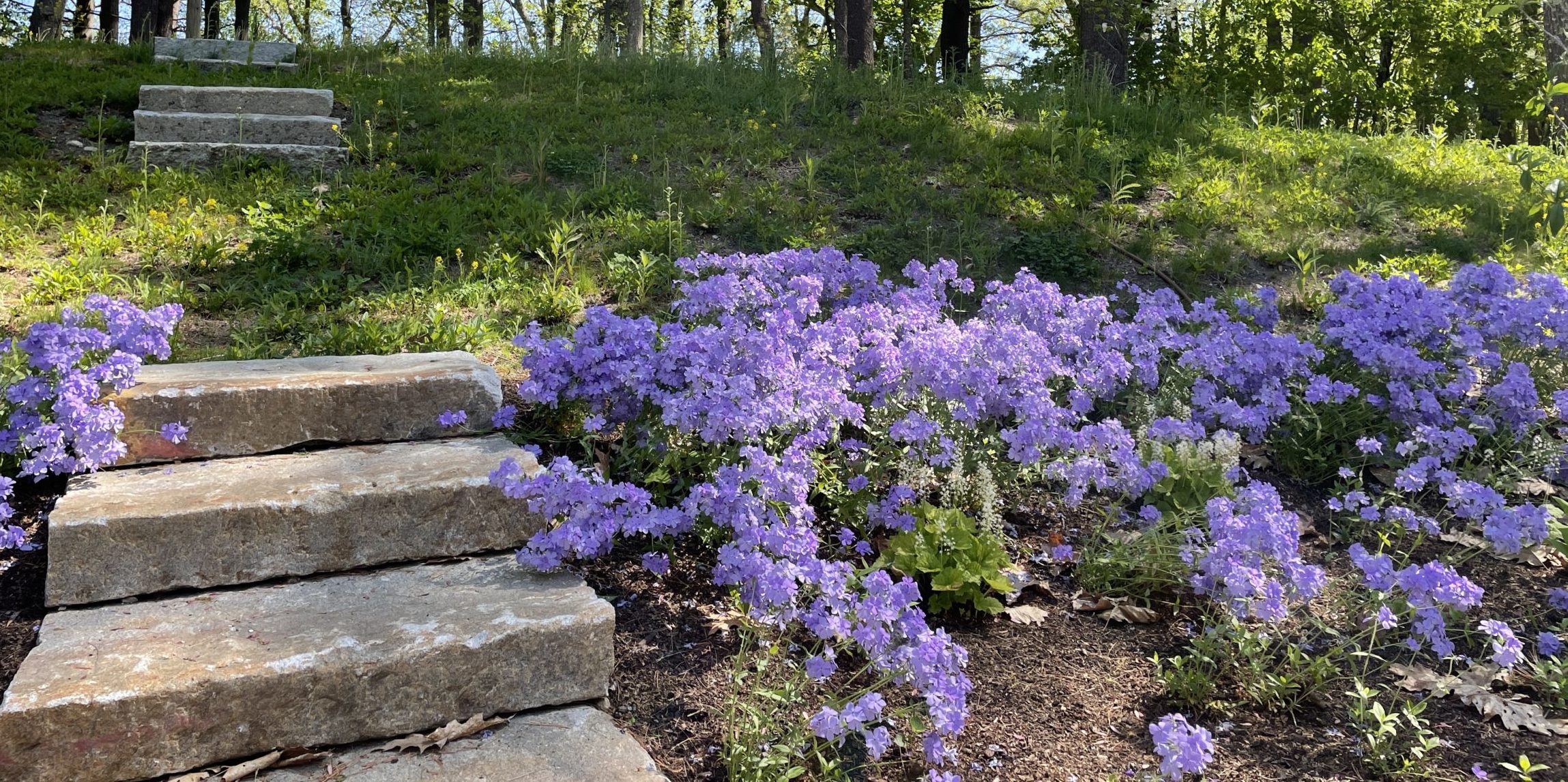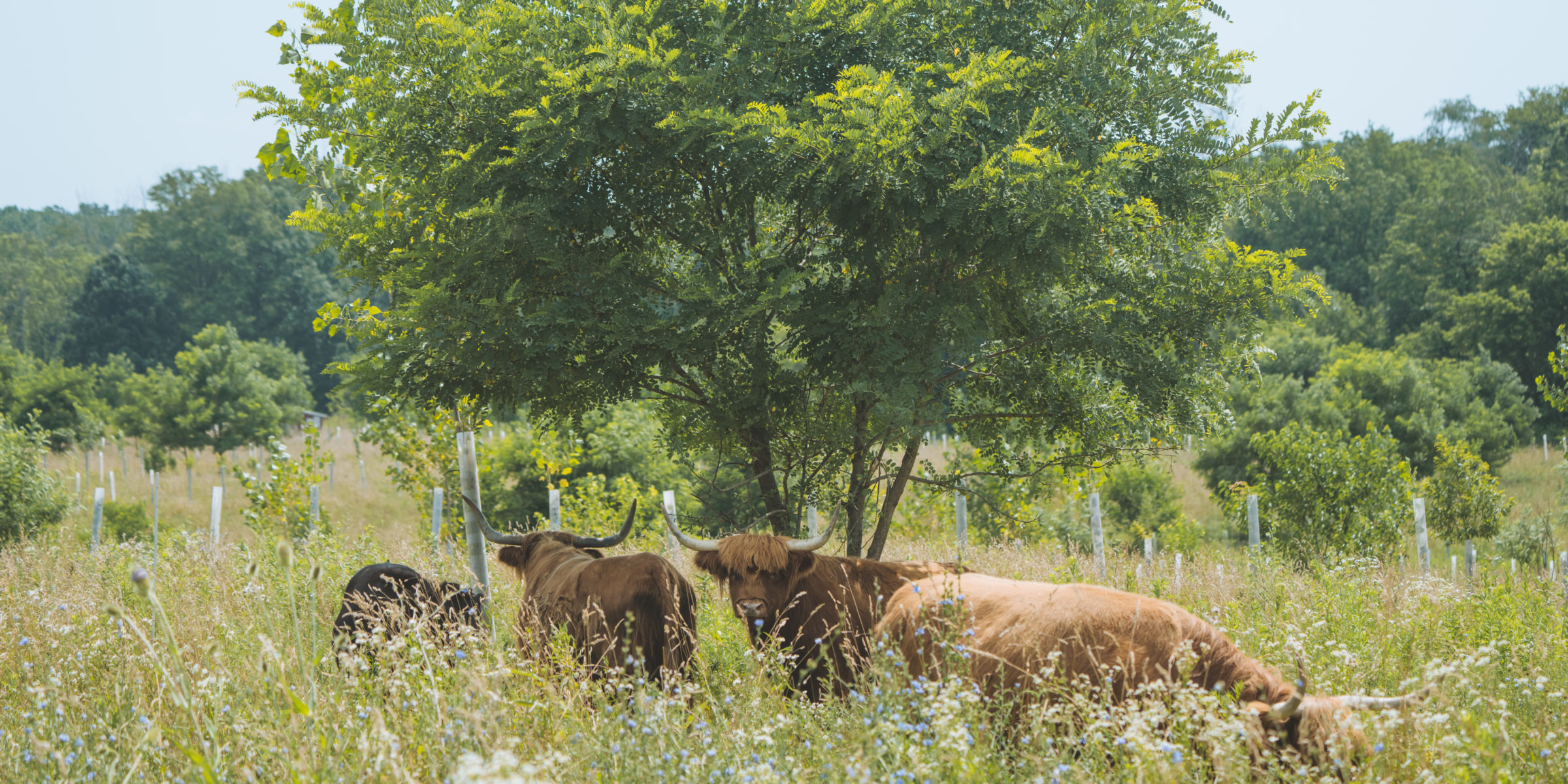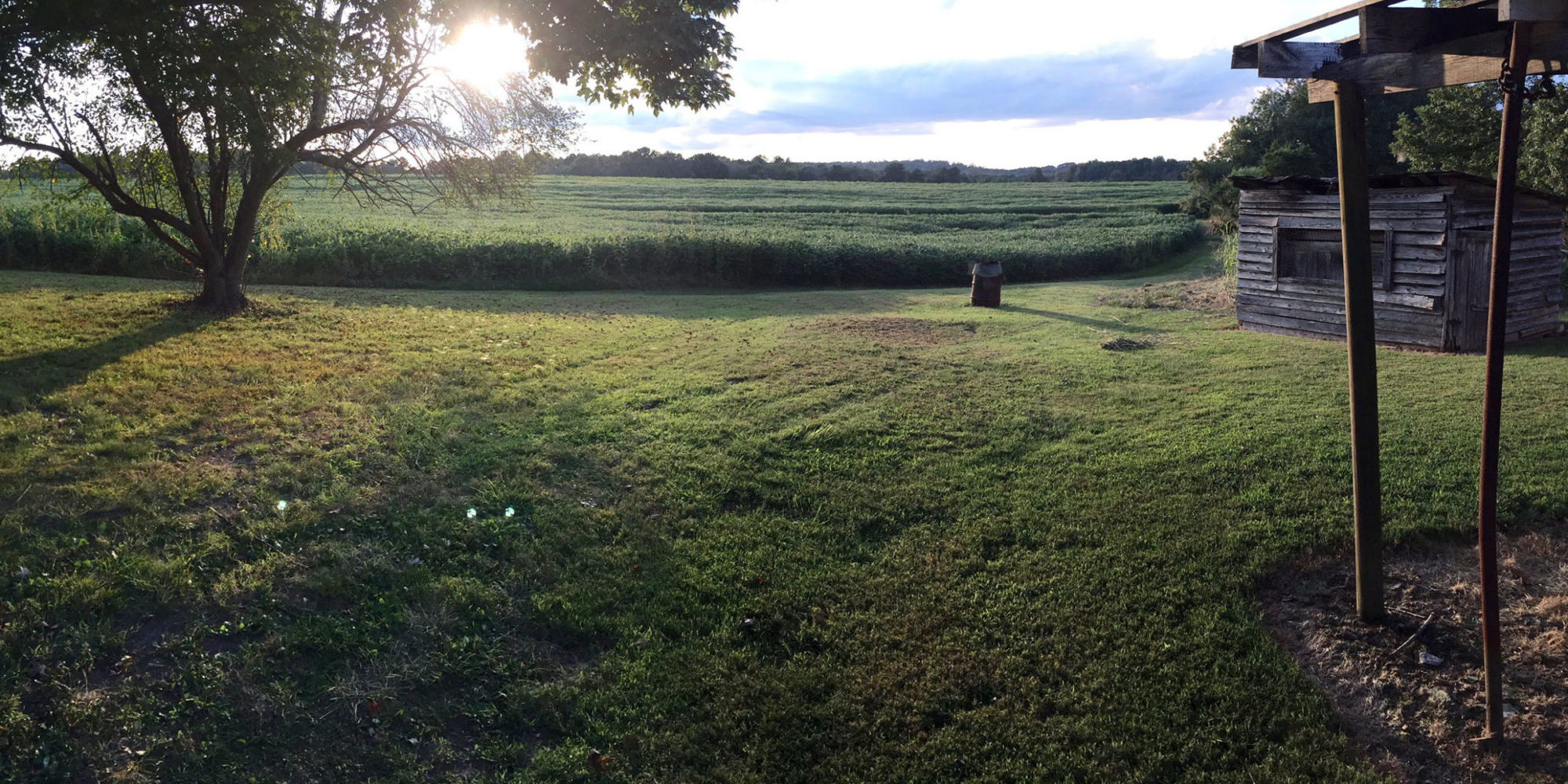Environmentally sensitive landscape design for a young family with a unique home.
Private Client | Wayland, MA
This unique property is surrounded by wetlands associated with the Sudbury River on three sides. A small knoll, where the house and garage are sited, are flanked by National Wildlife lands. When a young family purchased this property and began to renovate the buildings, they approached our studio for a landscape plan that met their family’s needs and those of the wildlife that nest, forage, and migrate through their property.
Since 2018, RDG has worked with the homeowners to manage the environmental permitting associated with the renovation of a guesthouse, and pool and patio construction. The local wetland and tree ordinances require a high ratio of replacement planting for trees removed during the construction process. These requirements were met through woodland edge diversification and invasive species remediation in the wetlands. Throughout the project, landscape installation practices went above and beyond the minimal requirements to limit soil and habitat disturbance, including relocating snapping turtle nests with a local environmental consultant.
The multi-year timeline for this project allowed for a dual approach to landscape transformation. In sensitive areas such as the wetlands, we focused on minimizing soil disturbance and removing undesired plants, rather than introducing new species. Manually removing the well-established glossy buckthorn resulted in a resurgence of native wetland understory, of jewelweed, ostrich fern, high bush blueberry, and skunk cabbage. Areas disturbed by site work were revived with a diverse palette of native and edible plants to create a landscape that incorporates color, creativity, and fun for the young family. The homeowner’s interest in pushing the boundaries of conventional planting design led to a custom diversified flowering lawn and integrated annual vegetables and perennial flowers. The final result is a vibrant outdoor space for the whole family with all-season interest for humans and wildlife alike.
Key Features
- Native plant design
- Edible landscaping
- All-season interest
Services Provided
- Site analysis
- Schematic design
- Environmental permitting
- Detailed planting plans
- Implementation oversight
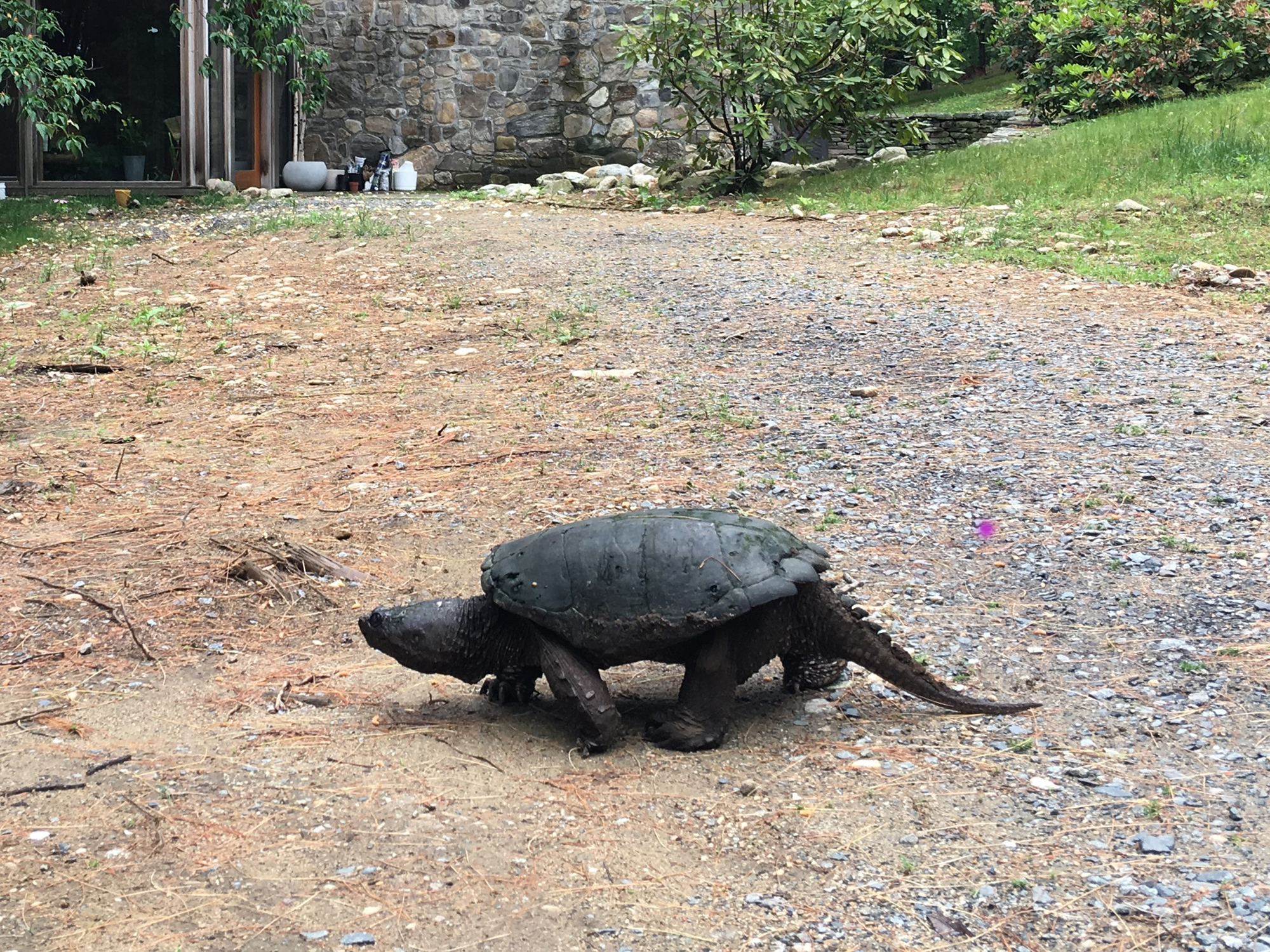
“After observing the seasonal nesting for two springs, it was clear that a portion of the family’s renovation plans for the landscape overlapped with the area where the turtles were laying their eggs. Because snapping turtle eggs can take up to 125 days to incubate, delaying construction until they hatched was not an option. So we reached out to a local ecological restoration organization and they helped transfer the nests to incubators.”
Rachel Lindsay, Project Lead

